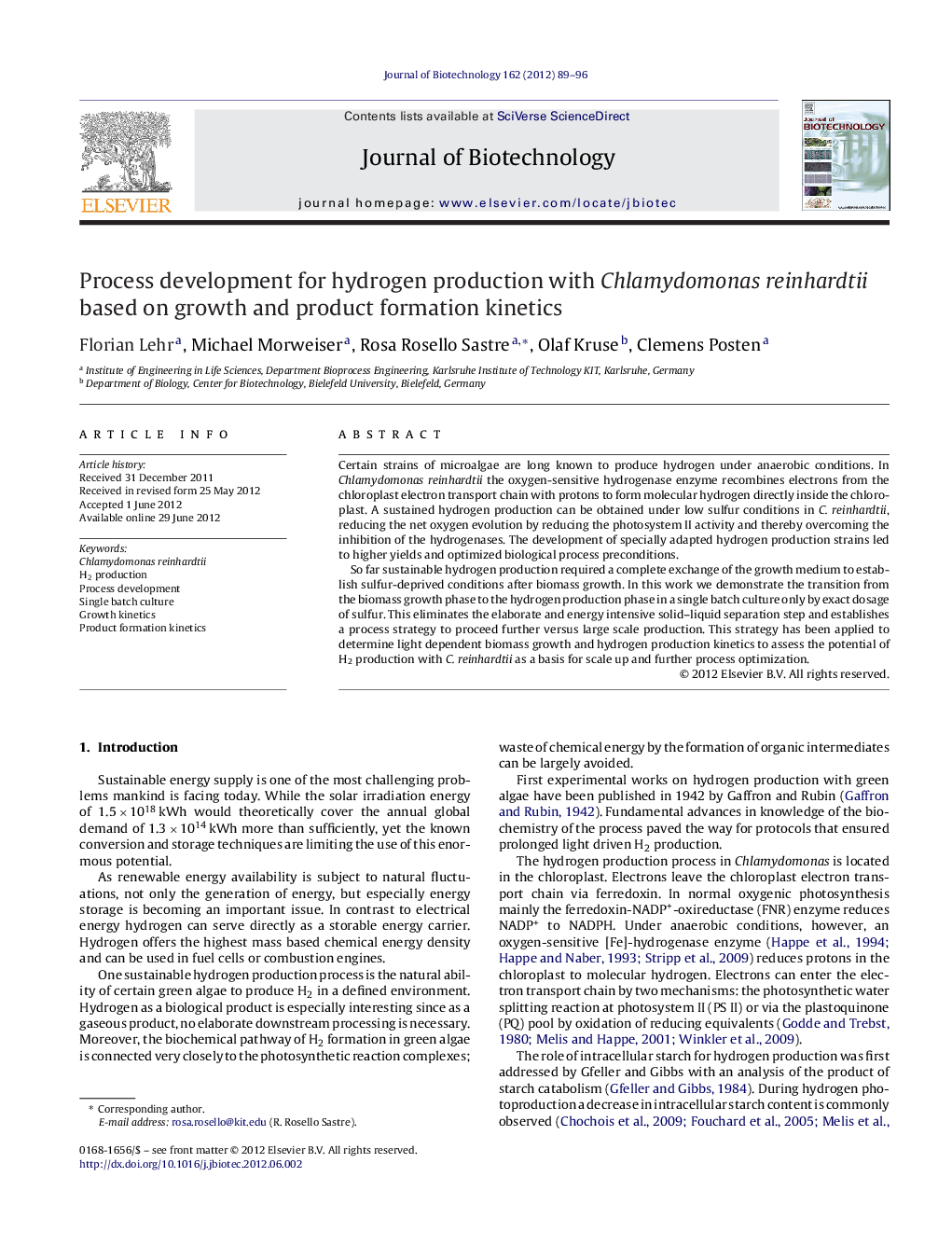| Article ID | Journal | Published Year | Pages | File Type |
|---|---|---|---|---|
| 23655 | Journal of Biotechnology | 2012 | 8 Pages |
Certain strains of microalgae are long known to produce hydrogen under anaerobic conditions. In Chlamydomonas reinhardtii the oxygen-sensitive hydrogenase enzyme recombines electrons from the chloroplast electron transport chain with protons to form molecular hydrogen directly inside the chloroplast. A sustained hydrogen production can be obtained under low sulfur conditions in C. reinhardtii, reducing the net oxygen evolution by reducing the photosystem II activity and thereby overcoming the inhibition of the hydrogenases. The development of specially adapted hydrogen production strains led to higher yields and optimized biological process preconditions.So far sustainable hydrogen production required a complete exchange of the growth medium to establish sulfur-deprived conditions after biomass growth. In this work we demonstrate the transition from the biomass growth phase to the hydrogen production phase in a single batch culture only by exact dosage of sulfur. This eliminates the elaborate and energy intensive solid–liquid separation step and establishes a process strategy to proceed further versus large scale production. This strategy has been applied to determine light dependent biomass growth and hydrogen production kinetics to assess the potential of H2 production with C. reinhardtii as a basis for scale up and further process optimization.
► We developed one step process for hydrogen production. ► Optimum working PFD is close to 250 μ/(m2 s) for efficient use of incident light. ► Bioreactor design development towards optimum light intensity ratios. ► High incident light reduces the time span for maximum H2 production rate. ► Electron flow variation for H2 production from residual PSII activity to starch catabolism.
